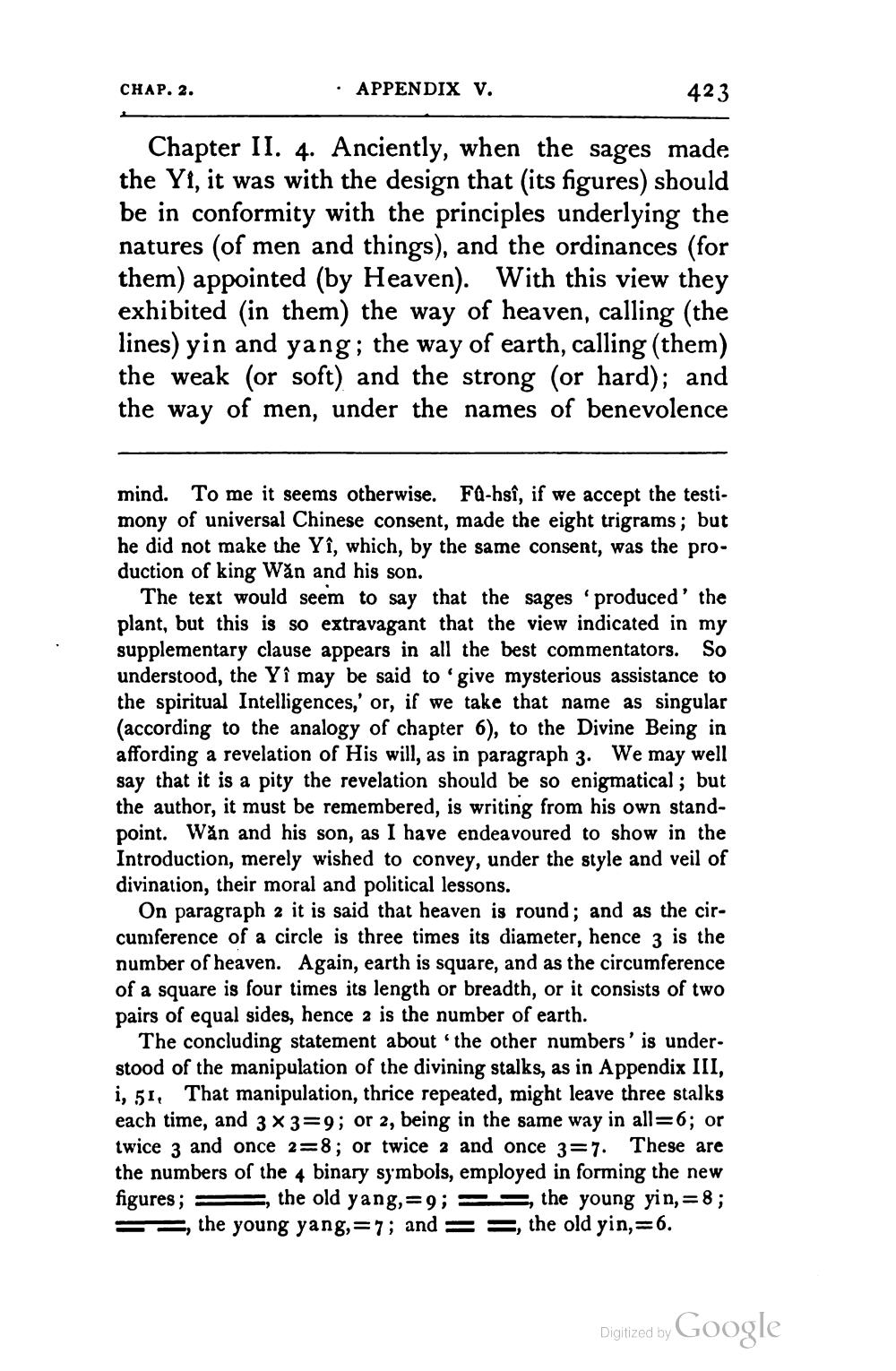________________
CHAP. 2.
APPENDIX V.
423
Chapter II. 4. Anciently, when the sages made the Yi, it was with the design that (its figures) should be in conformity with the principles underlying the natures (of men and things), and the ordinances (for them) appointed (by Heaven). With this view they exhibited (in them) the way of heaven, calling (the lines) yin and yang; the way of earth, calling (them) the weak (or soft) and the strong (or hard); and the way of men, under the names of benevolence
mind. To me it seems otherwise. Fu-hsî, if we accept the testimony of universal Chinese consent, made the eight trigrams; but he did not make the Yî, which, by the same consent, was the production of king Wăn and his son.
The text would seem to say that the sages 'produced' the plant, but this is so extravagant that the view indicated in my supplementary clause appears in all the best commentators. So understood, the Yî may be said to 'give mysterious assistance to the spiritual Intelligences,' or, if we take that name as singular (according to the analogy of chapter 6), to the Divine Being in affording a revelation of His will, as in paragraph 3. We may well say that it is a pity the revelation should be so enigmatical; but the author, it must be remembered, is writing from his own standpoint. Wăn and his son, as I have endeavoured to show in the Introduction, merely wished to convey, under the style and veil of divination, their moral and political lessons.
On paragraph 2 it is said that heaven is round; and as the circumference of a circle is three times its diameter, hence 3 is the number of heaven. Again, earth is square, and as the circumference of a square is four times its length or breadth, or it consists of two pairs of equal sides, hence 2 is the number of earth.
The concluding statement about 'the other numbers' is understood of the manipulation of the divining stalks, as in Appendix III, i, 51, That manipulation, thrice repeated, might leave three stalks each time, and 3 x3=9; or 2, being in the same way in all=6; or twice 3 and once 2=8; or twice 2 and once 3=7. These are the numbers of the 4 binary symbols, employed in forming the new figures;, the old yang,=9;, the young yin,=8; the young yang,=7; and ==, the old yin,=6.
Digitized by
Google




